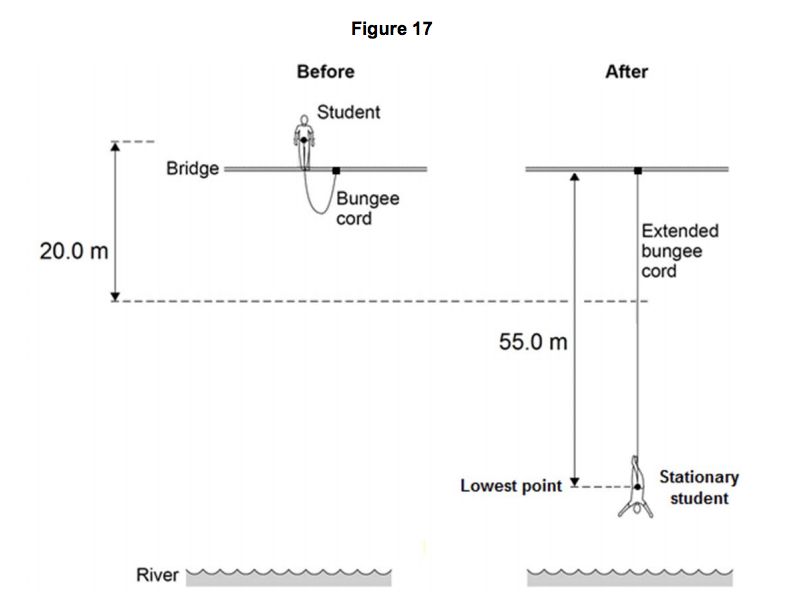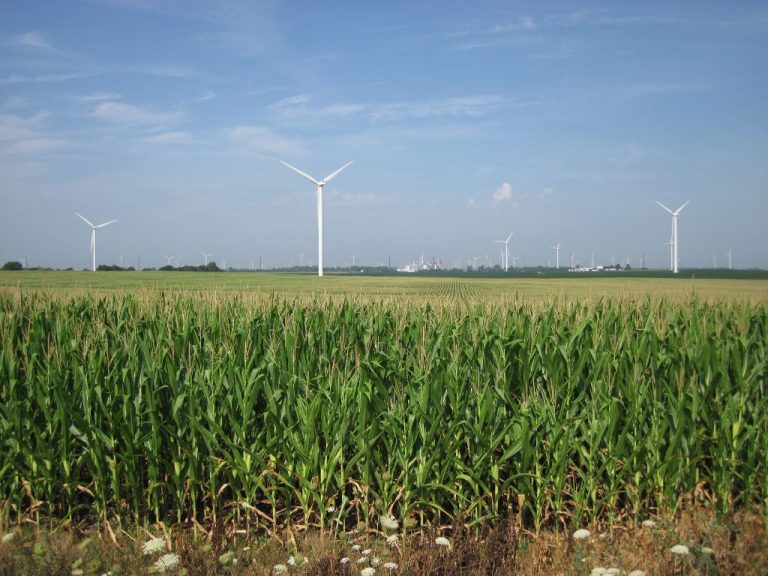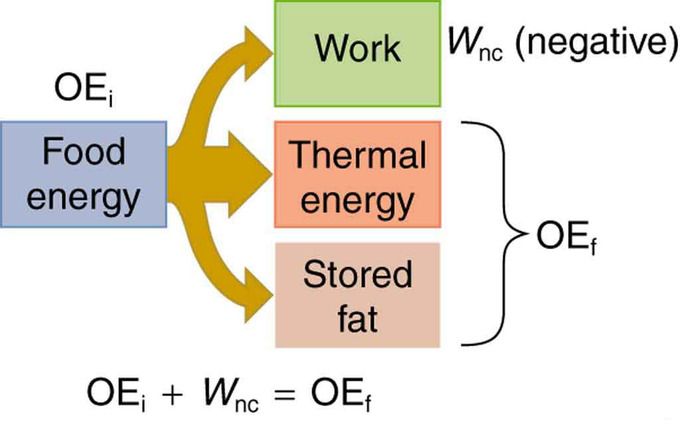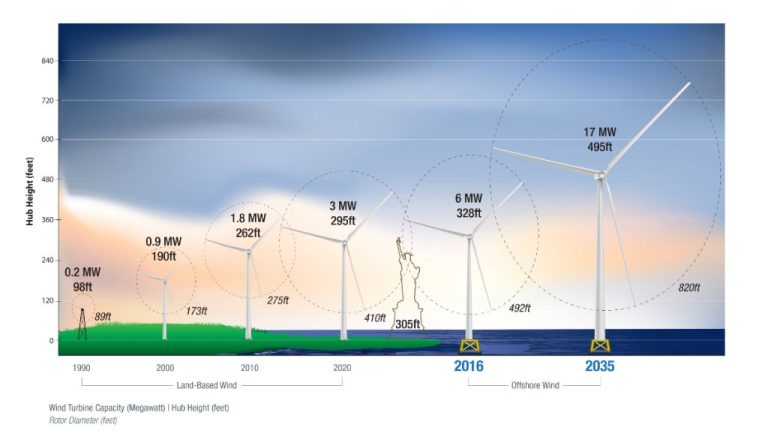Where Can You Find Elastic Energy?
What is Elastic Energy?
Elastic energy is the energy stored in materials that can be stretched or compressed, like springs or rubber bands. The more an elastic material is deformed, the more energy it stores. This energy is then released when the material returns to its original shape.
Elastic potential energy refers specifically to the energy stored within a deformed elastic object. This stored energy results from the work required to stretch or compress the material. When the applied forces are removed, the stored elastic potential energy powers the return of the elastic object back to its original shape. The elastic potential energy is converted into kinetic energy as the object returns to equilibrium.
Kinetic energy is the energy of motion that a moving object possesses. This is different from elastic potential energy, which is stored energy resulting from deformation, not motion. Kinetic energy depends on the mass and velocity of the moving object. Elastic potential energy depends on the material properties and amount of deformation.
The interconversion between elastic potential energy and kinetic energy is an example of the law of conservation of energy. As an elastic object is stretched or compressed, it gains elastic potential energy. When released, this elastic potential energy is converted into kinetic energy as the object returns to its relaxed shape.
Elastic Materials
Elastic materials are able to deform when a force is applied, but then return to their original shape when that force is removed. Some common examples of elastic materials include:
- Rubber bands
- Bungee cords
- Trampolines
- Springs
- Tree branches
The elastic properties of these materials allow them to store elastic potential energy when they are deformed. This energy is stored in the bonds between the atoms and molecules of the material. When the material returns to its original shape, this energy is released.
The relationship between the applied force deforming an elastic material and the material’s deformation is described by Hooke’s law. Hooke’s law states that the force F needed to extend or compress a spring by some distance x scales linearly with respect to x. That is:
F = -kx
Where k is a constant factor characteristic of the spring and is called the spring constant or force constant. This law essentially means that elastic materials exhibit a linear relationship between stress (force applied) and strain (deformation). The greater the deformation, the more force is required.
Where is Elastic Energy Found?
Elastic energy can be found in various everyday objects and materials that have the ability to stretch or compress and then return back to their original shape. The main sources of elastic energy include:
Springs
Coiled springs are one of the most common examples of elastic energy. When a spring is compressed or stretched from its equilibrium position, it stores elastic potential energy. This energy gets converted into kinetic energy when the spring recoils back to its original shape. The amount of elastic energy stored depends on the spring constant (stiffness) and distance displaced.
Rubber bands
Rubber bands demonstrate elastic behavior and can store elastic energy when stretched. The polymer chains in rubber bands get stretched out when the band is extended, building up potential energy that gets released as the rubber snaps back to its relaxed length. Heavier duty rubber bands can store more elastic energy.
Bungee cords
Bungee cords made of elastic rubber also exhibit the ability to store energy when elongated. As bungee jumpers stretch the cord, elastic potential energy in the rubber builds up and is converted to kinetic energy as the cord recoils back up. The amount of energy stored depends on the length the bungee is stretched.

Real World Examples
Elastic energy is common in many everyday objects and activities. Here are some examples of where elastic energy can be observed:
Slingshots
Slingshots utilize elastic energy by stretching the rubber band or tubing. When you pull back on the pouch, you are deforming the elastic and storing energy. When released, the band snaps back to its original shape and transfers the stored energy into the projectile, launching it forward.
Trampolines
The mat and springs of a trampoline exhibit elastic properties. When you jump, your kinetic energy is transferred into potential energy by stretching the springs. As the springs recoil back, this elastic potential energy is converted to kinetic energy, propelling you upwards.
Pole Vaulters
Pole vaulters bend the flexible pole during their run up. This pole acts like a spring, and the vaulter’s kinetic energy deforms it. As the pole springs back into its original straight shape, the stored elastic potential energy is transferred into vertical kinetic energy and lifts the vaulter higher over the bar.
Applications and Uses
Elastic energy has many practical applications and uses in our everyday lives. Some of the main ways elastic energy is applied include:
Energy Storage
Elastic materials like springs and rubber bands are able to store mechanical energy when they are deformed or stretched. The energy gets stored in the bonds between the molecules of the material. When the material returns back to its original shape, this stored elastic energy is released and can be used to do work.
Shock Absorption
The ability of elastic materials to deform and return to their original shape makes them ideal for absorbing shocks and impacts. Suspension systems in vehicles use springs and shock absorbers for smoothing out bumps in the road. Elastic materials are also used in shoe soles, protective sports gear, and earthquake-resistant buildings to absorb kinetic energy.
Catapults
Catapults utilize elastic energy by stretching elastic bands or twisting rope to store potential energy. When released, this energy gets transferred to the projectile and launches it forward. Rubber bands and bungee cords work through the same principle to propel objects attached to them.
Calculations
One of the key ways to calculate characteristics of elastic energy is by using Hooke’s law. Hooke’s law states that the force needed to extend or compress a spring by some distance is proportional to that distance. The law is usually expressed as:
F = -kx
Where:
- F is the restoring force exerted by the spring
- k is the spring constant (a characteristic of the spring)
- x is the displacement of the spring from its equilibrium position
The minus sign indicates that the restoring force always acts in the opposite direction of the displacement.
For an ideal spring that obeys Hooke’s law, the potential energy stored in the spring as it’s stretched or compressed is equal to:
PE = 1⁄2kx2
Where k is the spring constant as above, and x is the displacement from equilibrium. This potential energy stored in the spring due to deformation is referred to as elastic potential energy.
By using Hooke’s law, we can calculate the energy stored in a stretched or compressed spring. This allows us to quantify the energy that can be released as the spring returns to its relaxed length.
Conservation of Mechanical Energy
Elastic potential energy and kinetic energy can convert back and forth between one another while the total mechanical energy remains constant. This is known as the conservation of mechanical energy.
For example, when a rubber band is stretched, elastic potential energy is being stored. When the rubber band is released, that stored elastic potential energy converts into kinetic energy as the rubber band springs back to its original shape and travels through the air.
The kinetic energy from the moving rubber band can then be converted back into elastic potential energy if the rubber band is caught and stretched again. The kinetic energy decreases as elastic potential energy increases, but the total mechanical energy remains the same.
This back and forth conversion occurs because energy is conserved in classical mechanics when forces are conservative and no energy is lost to things like heat or sound. This makes elastic materials like springs and rubber bands useful for storing and releasing energy in mechanical systems.
Forces and Elastic Materials
There are several types of forces that act on elastic materials and enable them to store elastic potential energy. These key forces include:
Tension Force
The tension force acts to stretch or elongate an elastic material. For example, when you pull on a rubber band, the tension force stretches it. The molecules and chemical bonds in the rubber band resist the stretching and exert an opposing restoring force.
Normal Force
The normal force acts perpendicular or normal to an object’s surface. When an elastic material like a spring or foam is compressed, the normal force from compression causes the material to deform and bend, which stores potential energy.
Restoring Force
The restoring force acts in opposition to forces like tension or compression. It tries to bring an elastic material back to its original shape and length. The restoring force is what drives a stretched rubber band to snap back or a compressed spring to re-expand.
These forces allow elastic materials to store mechanical energy and release it for useful work. The interplay between tension, compression, deformation, and restoring forces is what gives elastic materials their unique properties and capabilities.
Advantages and Disadvantages
Elastic energy provides many benefits as a form of energy storage, though there are some limitations to using elastic materials as well. Let’s look at both the pros and cons.
Benefits of Elastic Energy Storage
There are several key advantages to using elastic energy storage:
- Highly efficient – elastic materials can store and return over 90% of energy input.
- Reusable – elastic materials can undergo many cycles with little degradation.
- Fast response time – stored elastic energy can be released immediately on demand.
- Compact and portable – elastic devices take up little space and can be moved.
- Low maintenance – elastic materials are robust and don’t require much upkeep.
- Environmentally friendly – elastic storage is a clean, renewable energy source.
Limitations of Elastic Materials
However, there are some drawbacks to elastic energy storage:
- Low energy density – elastic materials cannot store as much energy per unit volume as other forms.
- Self-discharge – stored elastic energy can dissipate over time.
- Durability issues – elastic materials lose efficiency as they undergo more cycles.
- Temperature sensitivity – elasticity changes with extreme heat or cold.
- Strength limits – too much force can permanently deform elastic materials.
- Cost – some advanced elastic materials can be expensive to produce.
Overall, elastic energy storage provides a simple, efficient method to store and release energy on demand. The advantages often outweigh the limitations for many energy storage applications.
FAQs
Here are answers to some common questions about elastic energy:
What is elastic energy?
Elastic energy is the energy stored in elastic materials as they are deformed. For example, stretching or compressing a spring stores energy in it – this is elastic energy.
What materials can store elastic energy?
Materials like springs, rubber bands, bungee cords, trampolines, bows, slingshots, and stretched muscles exhibit elastic behavior and can store elastic energy when deformed.
Where can you find elastic energy in everyday life?
Elastic energy is found in many common items and systems including vehicle suspension springs, elastic waistbands, pull-back toys, archery bows, bungee jumping cords, and even hair ties.
How is elastic energy useful?
Elastic energy can be used to store energy for later use. For example, stretched rubber bands can propel objects when released. Elastic energy also allows items and systems to return to their original shape after being deformed.
Is elastic energy renewable?
Yes, elastic energy is renewable. Unlike fossil fuels, elastic materials can store and release energy repeatedly without being permanently altered. As long as the elastic limit is not exceeded, elastic energy can continue being stored and released.





